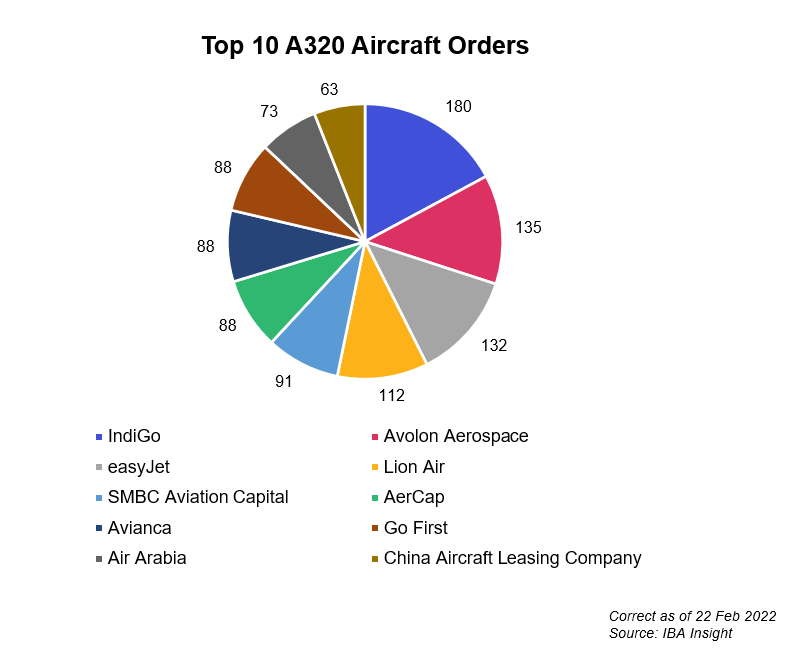22/02/2023
The revolutionary Airbus narrowbody made its maiden flight on 22nd February 1987. It was an all-new aircraft, boasting advanced fly-by-wire technology and a host of other cutting-edge features. The aircraft quickly gained the attention of airlines who wanted to take advantage of its low operating costs, high fuel efficiency and competitive price.
The program that would eventually give birth to the aircraft can be traced back to 1977, when the Joint European Transport Program (JET) began working on designs for narrowbody aircraft pitched at the 130-188 seat market. The project aimed to produce an aircraft with a cruise speed of Mach 0.84, faster than the top line Boeing 737 models available at the time. In addition to a speed advantage over the competition, the aircraft could act as an appropriate replacement for the ageing narrowbody fleet operating across Europe (such as older 737 family jets and the BAC One Eleven). The initial single aisle concepts that emerged from the program were designated SA1, SA2 and SA3. These became the Airbus A319, A320 and A321. The A320 went on to be unveiled in Toulouse and took its first flight in February 1987.
The aircraft went on to establish itself as the backbone of short and medium haul fleets across the world. The introduction of the A320neo in 2015 effectively stole the march to efficiency in the narrowbody space from Boeing, who's slower introduction of the 737 MAX (and subsequent delays) contributed to Airbus having the highest net orders of any OEM for 4 straight years at the start of 2023.
How large is the global A320 fleet?
Commercial aircraft fleet data from IBA Insight reveals 4,954 active A320 aircraft as of 22 February 2023. The largest global operator of the A320 is China Eastern Airlines, who currently operate 256 aircraft.
Who has the most A320 aircraft on order today?
Whilst the first firm orders for the A320 came from British Caledonian Airways, French flag carrier Air France became the launch customer for the type with an initial order for 50 aircraft. The first of these was delivered to the airline on 26th March 1988. The introduction of the IAE V2500 engine option in the early 1990s further diversified the appeal of the entire family, with notable mainline European fleets utilising IAE powered Airbus aircraft. The introduction of the A320neo brought the new generation CFM LEAP-1A and PW1100GM engines into the picture, offering up to 15% more fuel efficiency according to Airbus.

As of 22nd February 2023, IBA Insight reveals there are 2,352 active orders for A320 aircraft, which includes all variants. The largest single active order for the aircraft comes from Indian low-cost carrier Indigo, who have 180 A320neo aircraft on order.
What is the outlook for Airbus A320 aircraft values?
“The Airbus A320-200 continues to be a crucial part of operator’s fleets worldwide and, as evidenced by the secondary market activity we observed in the second half of 2022, the A320-200 still retains a relatively high level of liquidity” says Hashen Hawawasam, Head of Commercial Aircraft Valuations.
“IBA expects the A320-200 Market Value to Base Value relationship to stabilise in 2023. The A320-200 has begun its conversion program into a freighter aircraft with one A320-200P2F aircraft currently in service, owned by ST Engineering Aerospace and now operated by Pradhaan Air Express. Given the demand for narrowbody aircraft in recent months and the lack of supply of newer generation aircraft, IBA expect the value performance of the A320-200 to remain stable in 2023, with the potential for increases depending on the market supply and demand.”
“In the long term, once the supply chain issues are resolved, more A320neo aircraft are expected to enter the market, particularly given that Airbus has ambitions to increase production rates in the years to come. This will inevitably replace A320-200 aircraft in large numbers thus causing a significant suppression in the values and lease rates of these aircraft. That said, we do expect to see some appetite in the P2F program (albeit limited to the number of conversions) but this will support the demand for engines and parts over a longer period.”
IBA Insight flexibly illustrates multiple asset, fleet, and market positions, actual and potential, to inform client choices and identify acquisition opportunities. Immediate access to crucial aircraft, engine, lease rate and fleet data eases appreciation of historic and future aircraft concentrations and operator profiles.